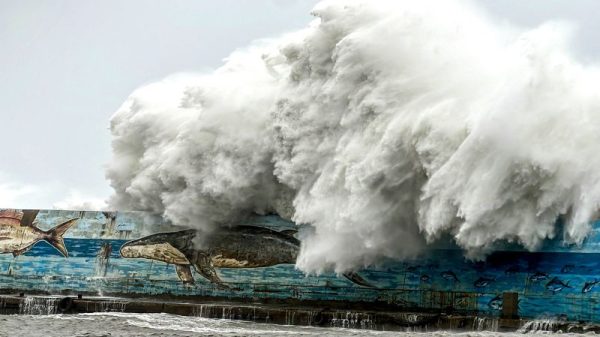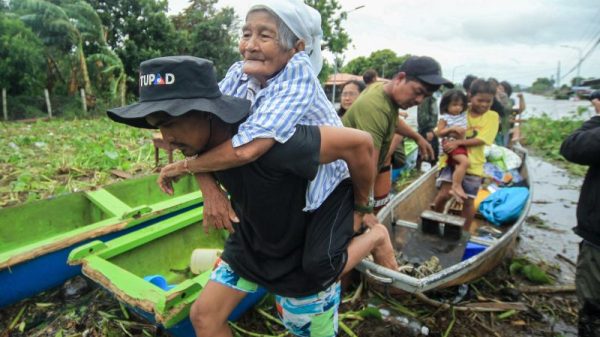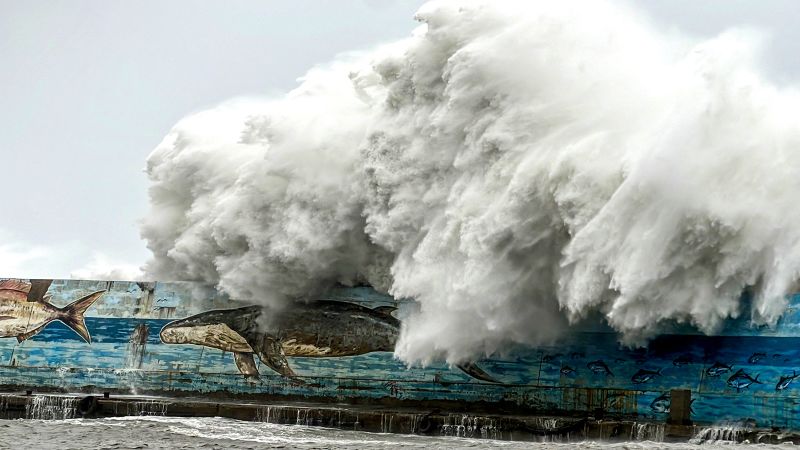One of the largest typhoon-related disasters to hit Taiwan in two decades, Typhoon Kong-rey made its stunning impact known in the history books in 2018. Unleashing its full fury on the island, it was a stark reminder of the unpredictable and treacherous nature of weather patterns in this region and the significant challenges they present. Over the years, Taiwan has witnessed various typhoon disasters, but none as devastating as Kong-rey since the historic Typhoon Herb in 1996.
Typhoon Kong-rey formed in the Pacific Ocean in the last quarter of September 2018. In a few days, it accelerated explosively and intensified into a super typhoon, radiating winds at a frightening speed of 250 km/h (155 mph). The meteorological world watched with bated breath as the ferocious typhoon headed towards the vulnerable island of Taiwan.
Taiwan started feeling the destructive impact of Typhoon Kong-rey on October 2, 2018. The typhoon’s approach shook not only the atmospheric pressure but also the sense of security of the island’s residents. Despite having developed advanced typhoon tracking over the years, nothing could have prepared Taiwan for the strength of Kong-rey, considered to be the most powerful storm since 1996’s Typhoon Herb.
As Kong-rey hurtled towards the island, meteorologists warned of the potential devastation to come. The violent storm brought with it high-intensity winds, torrential rains, and potentially deadly storm surges. Given the typhoon’s path and intensity, northern and central areas of Taiwan were expected to take the brunt of the typhoon’s impact.
Typhoon Kong-rey didn’t hold back once it made landfall. It triggered landslides in mountainous regions, with some areas receiving more than a meter of rain. Whole neighborhoods were flooded, streets turned into rivers, and houses literally swept away. Vehicle traffic was paralyzed as the roads were inundated with water and debris. Northern Taiwan, including the capital city Taipei, was harshly impacted with flooded streets and power outages that crippled the normal life and disrupted businesses.
In response to the devastation, a massive rescue operation was launched, with thousands of people being evacuated from their homes. Taiwan’s military was mobilized, with troops dispatched to the hardest-hit areas to assist with search, rescue, and cleanup operations. Despite these efforts, the human toll was unfortunately significant. Many lost their lives, while others sustained injuries. The damage to properties and infrastructure was colossal, costing the economy billions of Taiwan dollars.
Not only did Typhoon Kong-rey disrupt human life, but it also had a significant impact on the wildlife and ecosystem of the island. Huge volumes of water, litter, and debris were washed into the sea, causing extensive marine pollution. Unprecedented land erosion and landslides significantly transformed the natural landscape, leaving a lasting environmental impact.
Moreover, the event underlined the need for advanced disaster management plans and infrastructure robust enough to withstand such catastrophic storms. It emphasized the need for better building construction, adequate drainage systems, emergency facilities, and community preparedness programs.
The wrath of Typhoon Kong-rey served as a harsh lesson in the power of nature and the vulnerability of humankind. The devastating event demonstrated how rapidly developing climatic conditions could wreak havoc on societies. Simultaneously, it reinforced the need for a proactive, integrated approach to disaster management, emphasizing preparedness, responsiveness, rehabilitative efforts, and a shift toward sustainable practices to mitigate future storm impacts.
In the aftermath of the catastrophic typhoon, Taiwan showed the world its resilience and unity. The disaster sparked a wave of community initiatives, volunteerism, and international support that saw the island begin to recover, rebuild, and ultimately, to resist future super typhoons like Kong-rey.



































